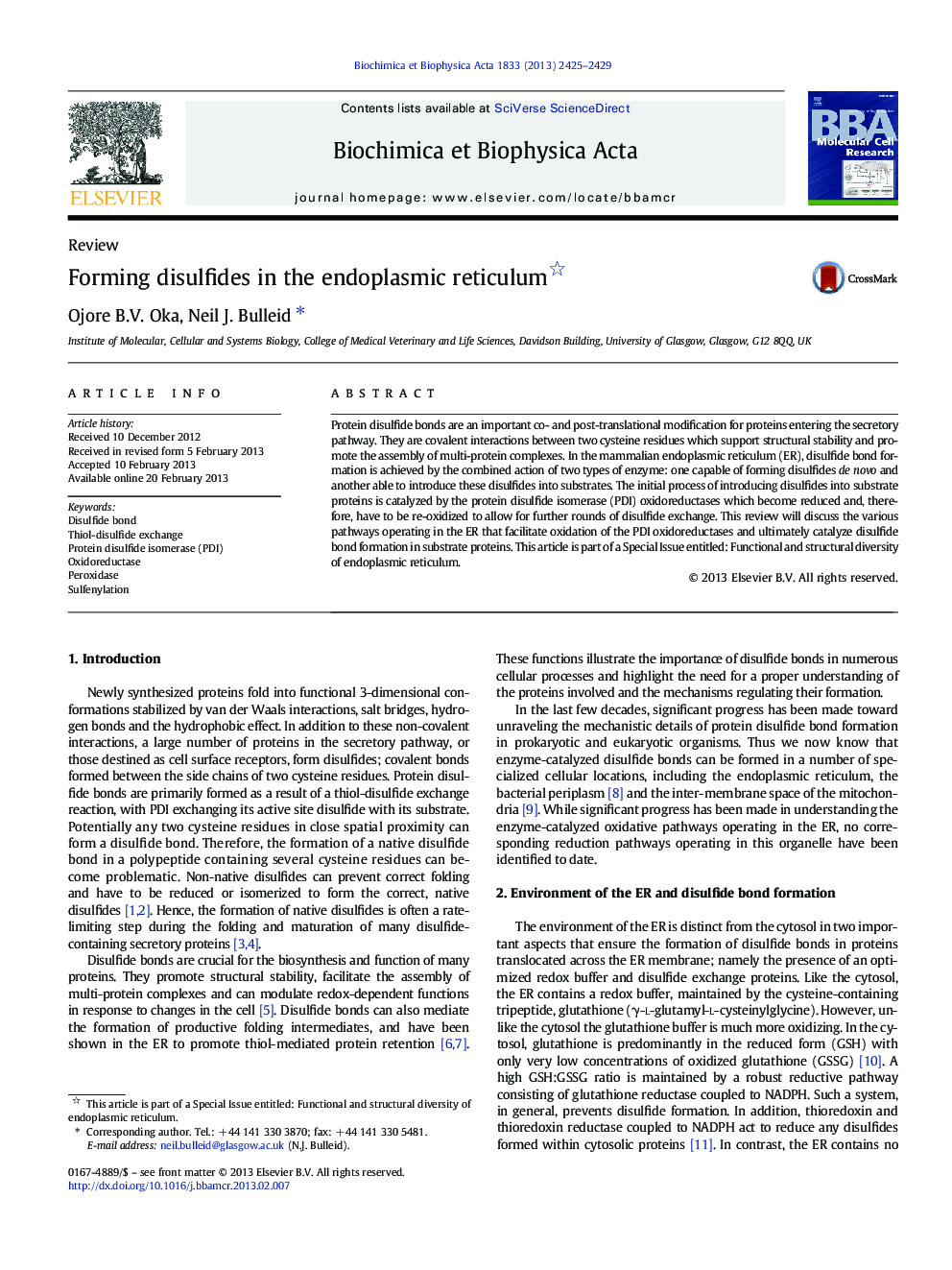| کد مقاله | کد نشریه | سال انتشار | مقاله انگلیسی | نسخه تمام متن |
|---|---|---|---|---|
| 1950638 | 1055680 | 2013 | 5 صفحه PDF | دانلود رایگان |

Protein disulfide bonds are an important co- and post-translational modification for proteins entering the secretory pathway. They are covalent interactions between two cysteine residues which support structural stability and promote the assembly of multi-protein complexes. In the mammalian endoplasmic reticulum (ER), disulfide bond formation is achieved by the combined action of two types of enzyme: one capable of forming disulfides de novo and another able to introduce these disulfides into substrates. The initial process of introducing disulfides into substrate proteins is catalyzed by the protein disulfide isomerase (PDI) oxidoreductases which become reduced and, therefore, have to be re-oxidized to allow for further rounds of disulfide exchange. This review will discuss the various pathways operating in the ER that facilitate oxidation of the PDI oxidoreductases and ultimately catalyze disulfide bond formation in substrate proteins. This article is part of a Special Issue entitled: Functional and structural diversity of endoplasmic reticulum.
► Disulfide formation in the ER is an enzyme catalyzed process.
► The process requires a disulfide exchange protein and an oxidase.
► PDI proteins are the main disulfide exchange proteins in the ER.
► Ero1, PrxIV, GPx 7/8, VKOR can all act as PDI oxidases.
► The correct ER redox conditions are required for native disulfide formation.
Journal: Biochimica et Biophysica Acta (BBA) - Molecular Cell Research - Volume 1833, Issue 11, November 2013, Pages 2425–2429